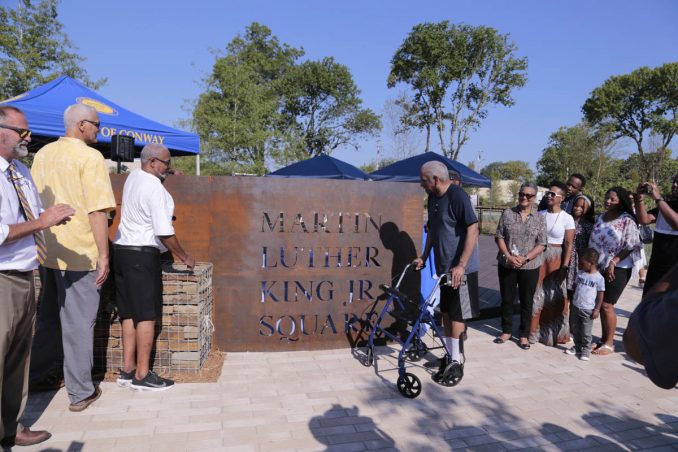
The recently opened Martin Luther King Jr. Square in downtown Conway, Arkansas, transforms a former brownfield site plagued by flooding into a lively stormwater park and cultural asset for the city.
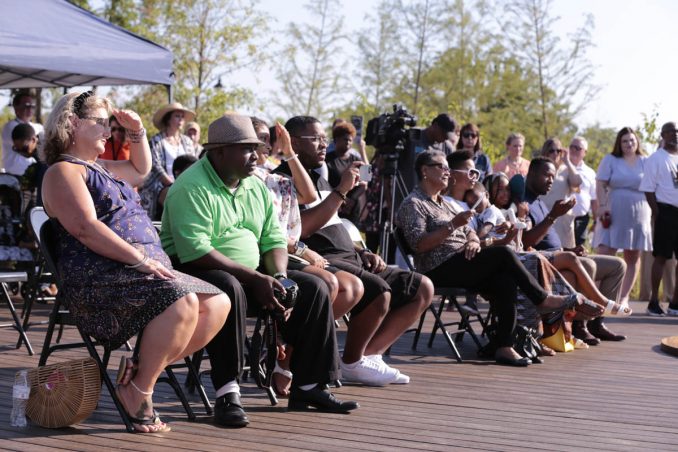
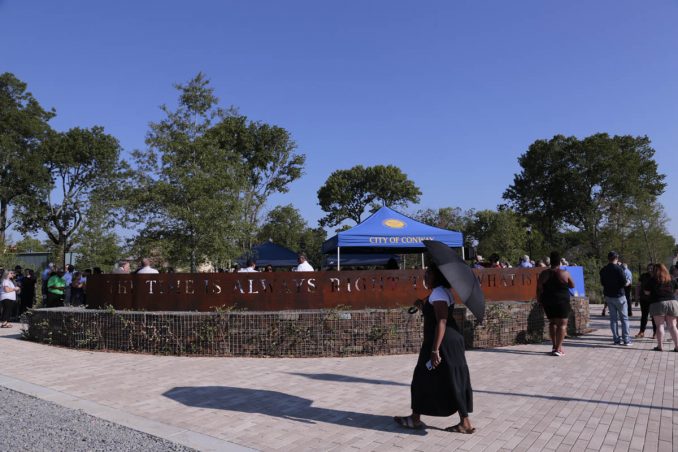
The City of Conway received local and federal grants to create a water quality demonstration park in a flood-prone, one-block area of its downtown to educate the public about Low Impact Development (LID) and Green Infrastructure (GI) methods and how they can enhance water quality. The remediated brownfield site, previously known as Markham Square and subject to seasonal flooding, was transformed into a 1.5-acre urban public space that showcases how LID/GI techniques work with nature to manage rainwater as close to its source as possible, using a variety of measures to slow, filter, infiltrate, and evaporate the runoff in this low-lying area. Using LID/GI methods, including permeable hardscapes, vegetated living walls, bioswales, and rain gardens, the project was artfully engineered to be a unique demonstration of an urban setting functioning in an environmentally responsible way, reducing nonpoint source pollution in the Lake Conway-Point Remove watershed, and delivering ecosystem services such as air quality regulation, water regulation, water infiltration, erosion control, nutrient cycling, and recreation.
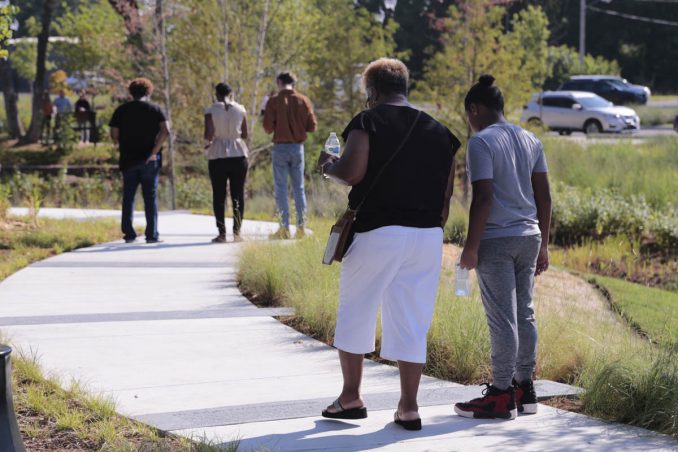
SWA’s landscape architecture team developed the design that collapses the categories of ‘community park’ and ‘stormwater park,’ creating a vision for a robust community asset in which green infrastructure and play, biodiversity and community, and stormwater management and recreation are all inseparable and complementary aspects of the built environment. SWA’s plan included new bike lanes, sidewalks, and additional trees as well as an entrance plaza, large open grass and garden areas, an amphitheater, and a children’s play area, which includes a water play area connected by a quarter-mile walking path.
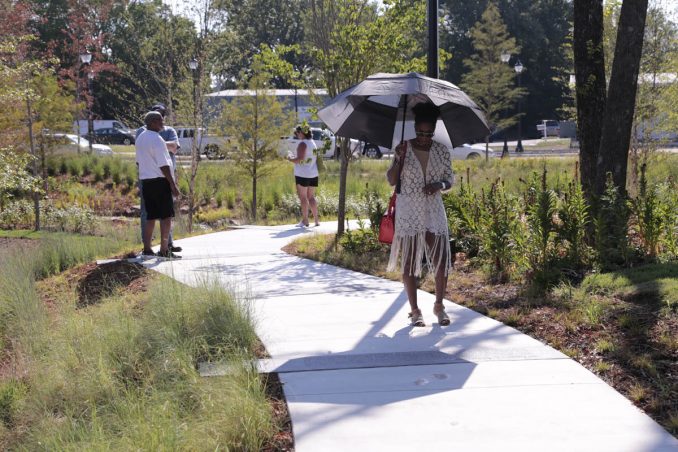
Most important to SWA’s design is Martin Luther King Jr. Square’s ability to retain and treat water that passes through its stream. With flood mitigation as a top municipal priority, the landscape architecture team deployed a network of low-impact design strategies to slow, spread, and infiltrate stormwater across the site. Primary among these was the infiltration basin. To increase the holding capacity of the park, SWA proposed excavating two to five feet of topsoil to create an infiltration basin capable of handling a 100-year storm event. The basin effectively doubles as a large flexible lawn for community activities, filling during rain events and offering a soft open space planted in native buffalo grass during dry periods. The park also features a ‘treatment train,’ allowing water to percolate through permeable paving into a series of rain gardens, and ultimately into the bioswale which acts as a daylit creek between the inlet and outlet storm drains serving the park. As illustrated in environmental graphics developed for the site, this system cleans water by facilitating the deposition of suspended sediments, traps and degrades pollutants to prevent their buildup downstream, and decreases downtown flooding by encouraging upstream infiltration.
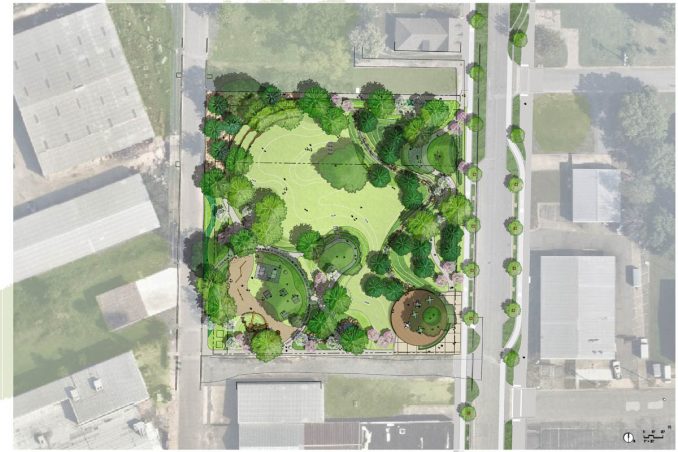
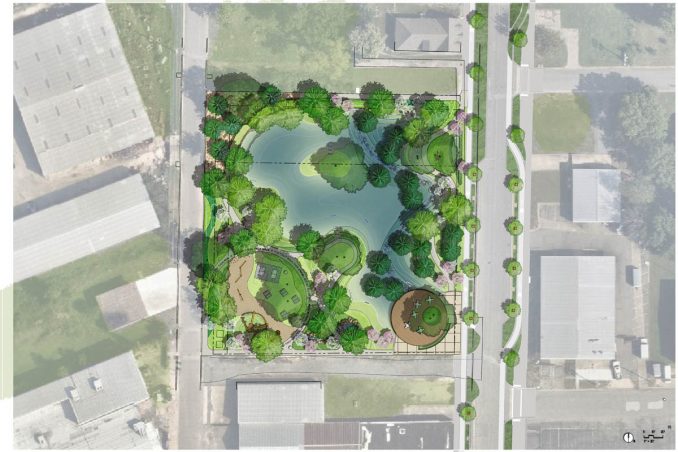
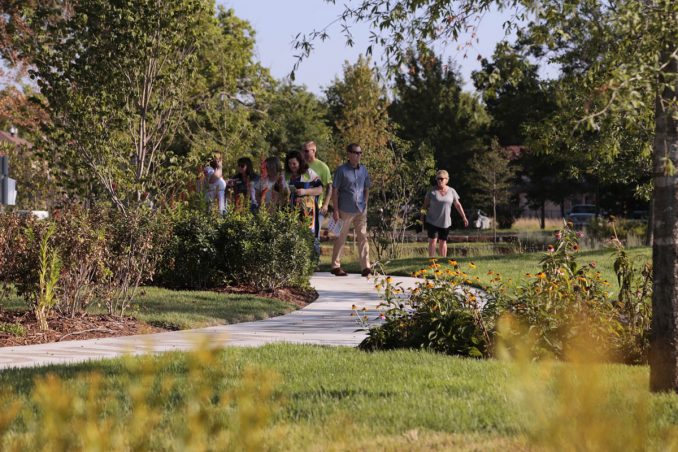
The most successful public spaces are those for which the community cares and treasures. From the outset, the landscape architect worked to integrate feedback from virtual community meetings and local NGOs into crafting educational, recreational, and gathering spaces that would foster ownership and best serve park users. The permeable entry plaza features a distinctive steel and gabion signage wall honoring the site’s significant historic ties to the city’s African American community and its achievements. The wall defines the edge of a circular overlook deck, offering visitors a vast view of the park’s green infrastructure systems and a space to gather, eat, and rest.
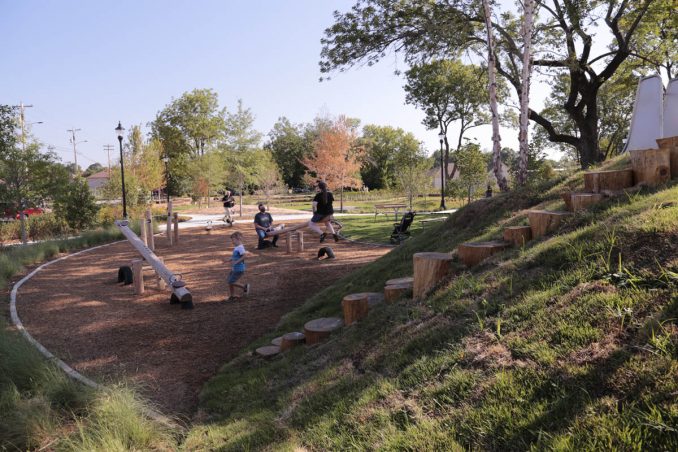
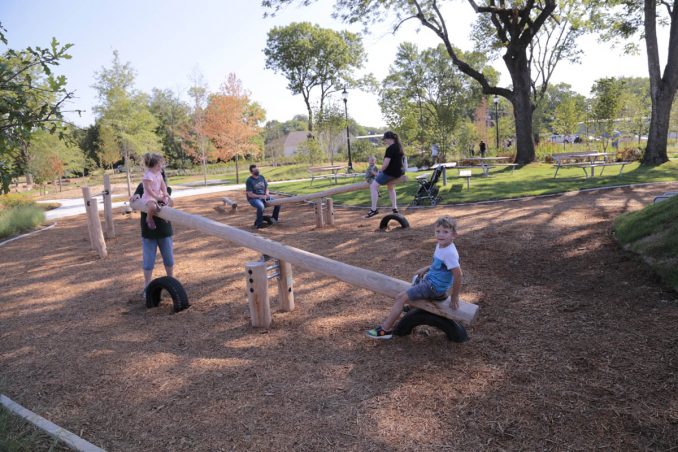
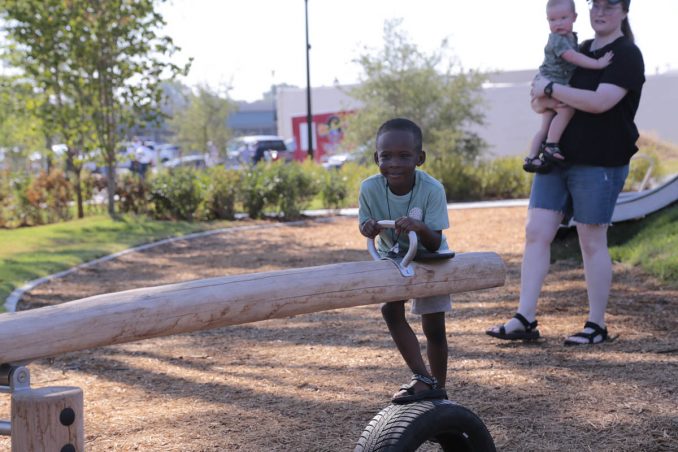
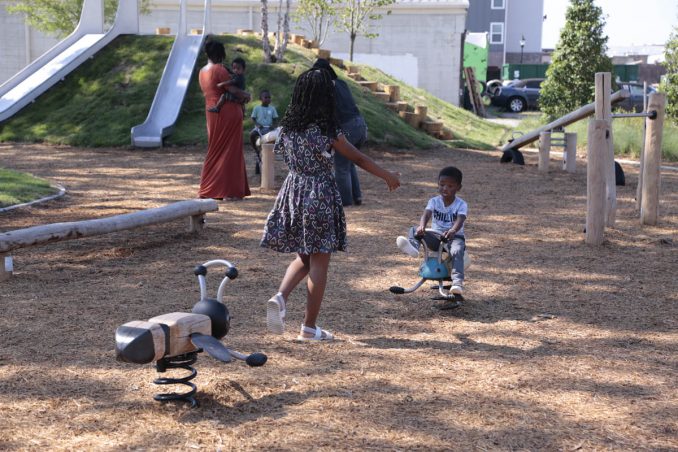
In the northwest corner of Martin Luther King Jr. Square, generous green terraces supported by Hackett stone walls create amphitheater seating for a soft performance space with a heritage oak tree forming a green proscenium for the stage. The northern permeable plaza, formed from site-recycled concrete ‘flagstones’ and decomposed granite, offers intimate seating beneath an increased tree canopy of stately red maples and black gums. Along the eastern rain gardens, a permeable crushed aggregate terrace offers an educational platform for students to gather and observe the water quality systems in action. Educational opportunities are further enhanced by the four environmental graphic boards throughout the park emphasizing watershed stewardship and low impact design elements found in the park. The project also includes workshops, videos, and informational graphics to help educate the public about water quality.
Martin Luther King Jr. Square
Location: Conway, Arkansas, USA
Landscape Architect: SWA
Photography: Tomas De Matteis
